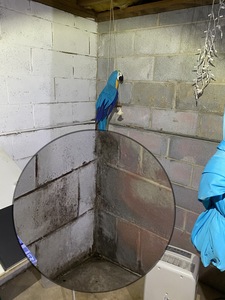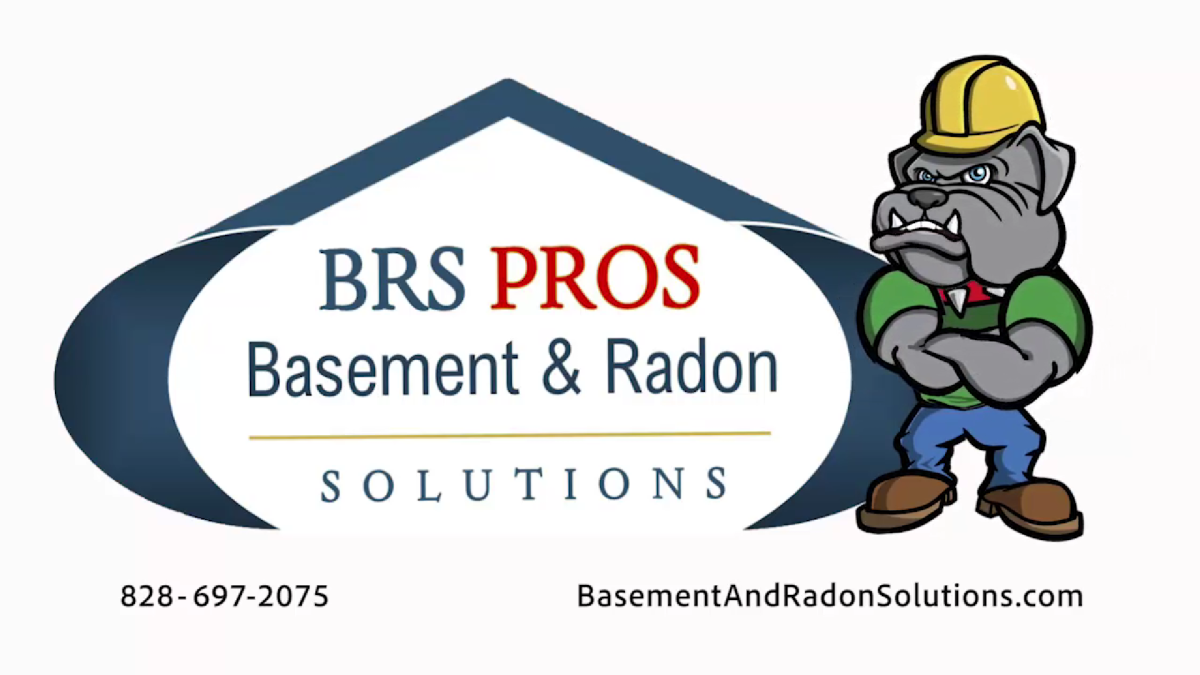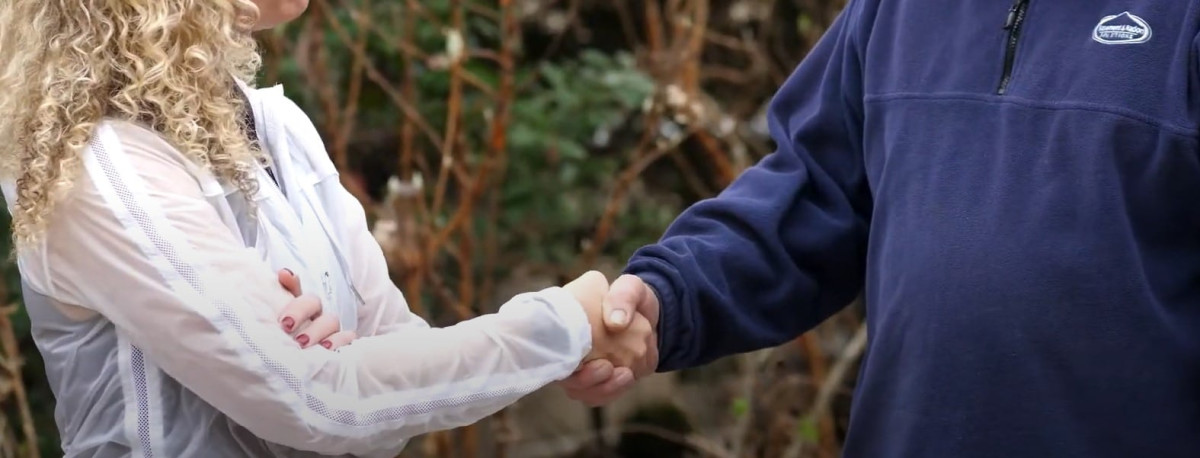A Step-by-Step Guide to What Professionals Check During a Basement Waterproofing Evaluation
Hendersonville, United States - July 23, 2025 / Basement & Radon Solutions /
You’ve decided it’s time to protect your home from potential water damage, and you’re preparing for a professional basement waterproofing inspection. But what should you expect? Essentially, you’re signing up for an all-encompassing look at your basement’s current state, from moisture levels to structural health. Inspectors will identify problem areas, suggest effective solutions, and even offer a cost estimate. But there’s much more to this process than meets the eye. Let’s explore what lies beneath the surface of a typical basement waterproofing inspection.
Understanding Basement Waterproofing
Maneuvering the world of basement waterproofing can be a complex task. However, with the right knowledge and guidance, you’ll find it’s not as overwhelming as it seems. Waterproofing is essential to protect your basement, and ultimately your home, from water damage.
You need to understand the basics before diving into the specifics of your situation.
First, you must know that there are two main types of waterproofing: interior and exterior. Interior waterproofing involves methods used inside the basement like sealants and coatings, while exterior waterproofing focuses on diverting water away from the house, typically involving drainage systems or barriers on the outside walls.
Each method has its pros and cons, and the best one for you depends on your specific needs and circumstances. Factors that influence your choice include the severity of your water problem, the construction of your home, and your budget.
Locating Sources of Moisture
 Where could moisture be sneaking into your basement? The usual suspects are clogged downspouts, ground water, leaky pipes, and even condensation. These are the primary sources of moisture that you’ll need to identify during a basement waterproofing inspection.
Where could moisture be sneaking into your basement? The usual suspects are clogged downspouts, ground water, leaky pipes, and even condensation. These are the primary sources of moisture that you’ll need to identify during a basement waterproofing inspection.
Firstly, check your downspouts. If they’re blocked with debris, they may be forcing water towards the foundation of your house instead of away from it. The result? You’ve got an unwanted water source seeping into your basement.
Next, look for signs of ground water intrusion. If you notice water stains on the walls or floor, it’s likely that ground water is finding its way in. This can be due to an inadequate drainage system or a high water table.
Leaky pipes are another common culprit. Even a small leak can cause significant moisture build-up over time. Look for signs such as damp spots or water stains around your piping.
Lastly, don’t underestimate condensation. It may seem harmless, but it can lead to serious moisture problems. When warm air hits a cold surface, it condenses, causing water droplets to form. This is especially common in basements, as they’re often cooler than the rest of the house.
Evaluating Structural Integrity
Now that you’ve located the sources of moisture, it’s important to evaluate the structural integrity of your basement.
You’ll need to identify any potential damage and assess the strength of your foundation.
From there, you can develop a remediation plan to address any issues and guarantee the long-term stability of your basement.
Identifying Potential Damage
When inspecting your basement for potential waterproofing issues, the first step is to evaluate the overall structural integrity.
It’s crucial to identify any potential damage that could compromise the effectiveness of any waterproofing efforts.
Begin by inspecting the walls. Look for signs of water damage, such as discoloration, mildew, or mold.
These indicators suggest moisture intrusion, which can degrade the material and weaken its resistance to incoming water.
Next, examine the floor for cracks. Hairline cracks may seem insignificant, but they can widen over time, allowing water to seep in.
Also, check for uneven areas or slopes on the floor. These could suggest shifting soil beneath the foundation, potentially leading to more significant issues.
Inspect the ceiling for damp spots or staining. If present, it’s a clear sign of a water leak, possibly from plumbing lines or from the upper levels of your home.
Lastly, pay attention to the overall smell of your basement. A musty, damp odor is a telltale sign of ongoing moisture issues.
Ignoring these signs can lead to costly repairs down the line.
Assessing Foundation Strength
A critical part of protecting your basement from water damage is evaluating the strength of your foundation. It’s the bedrock upon which your home stands, and any weakness can potentially lead to catastrophic issues down the line.
First, you’ll want to visually inspect the foundation for any visible signs of stress or damage. These can include hairline cracks, bulging walls, and uneven floors. Don’t overlook any minor issues; they could be indicative of larger, hidden problems.
Next, consider hiring a professional to conduct a thorough examination. They’ll use specialized equipment to assess the structural integrity of your foundation. This can include laser level surveys to detect any shifts in alignment, or core drilling to evaluate the composition and stability of the underlying soil.
Remember, it’s not just about identifying the problem. It’s about comprehending the severity and understanding the root cause. Is it due to natural settling, or is there an ongoing issue like water seepage?
Assessing your foundation’s strength isn’t a one-time event. It should be part of your regular home maintenance routine.
Because when it comes to safeguarding your basement from water damage, prevention is far better than cure.
Remediation Plan Development
Developing a remediation plan calls for a thorough inspection of your home’s structural integrity. This process guarantees that any potential issues are identified and addressed before they escalate into more serious problems.
The inspection begins with an exhaustive assessment of your foundation. The professional inspector will examine the walls, floor, and the entire basement structure for cracks, leaks, mold, and other signs of water damage.
They’ll also scrutinize your home’s gutters, drains, and downspouts, as they can lead to water buildup if they’re not functioning properly.
Once all potential problem areas are identified, the inspector will formulate a detailed remediation plan. This plan will pinpoint the exact locations of issues, outline the necessary repairs, and provide a clear timeline for the completion of the work.
It’s vital to understand that this plan isn’t a one-size-fits-all solution. It’s custom-tailored to address the specific issues affecting your home.
Potential Health and Safety Issues
When evaluating your basement for waterproofing, you mustn’t overlook the potential health and safety issues.
You need to be mindful of the risks associated with mold and mildew, which thrive in damp conditions and can lead to serious health problems.
In addition, any compromises in structural integrity due to water damage can pose significant safety threats.
Mold and Mildew Risks
In your home’s basement, lurking dangers such as mold and mildew can pose serious health and safety issues. These microorganisms thrive in damp, dark environments, making your basement an ideal breeding ground if it isn’t properly waterproofed.
Don’t underestimate their potential impact. They can cause allergies, respiratory issues, and other health problems in the occupants of your home.
When a waterproofing expert inspects your basement, they’re equipped to identify any signs of mold or mildew. They’ll check for discolored patches or a musty smell, which are telltale signs.
They’ll also use tools to measure humidity levels and spot hidden moisture that could be feeding these harmful organisms.
If mold or mildew is found, it’s not just about cleaning it up. You’ll need to address the root cause – excess moisture.
That’s where professional waterproofing comes into play. It’s a preventive measure designed to keep your basement dry and mold-free.
The expert will recommend the best solution for your basement, which could be installing a dehumidifier, sealing cracks, or applying waterproofing paint.
Structural Integrity Concerns
Often, unnoticed structural issues in your basement can lead to significant health and safety concerns.
It’s not just about water seeping in and causing mold. It’s about the stability of your home. You see, water can weaken the foundation, causing cracks and bowing walls. These aren’t just cosmetic issues. They’re signs that your house’s structural integrity is compromised.
You’ll want to keep an eye out for horizontal cracks, as these are especially dangerous. They indicate that your foundation is dealing with excessive lateral pressure. Ignoring this can lead to wall failures, which isn’t something you’d want to experience.
Another concern is a sinking foundation. This happens when the soil beneath your home can’t support the weight. You’ll notice this if doors and windows become hard to open or if you see gaps between your walls and ceiling.
A professional inspector will also look for signs of wood rot and termite damage. Both can severely weaken your home’s structure, making it unsafe to live in.
Reviewing Drainage Systems
Numerous homes have a hidden ally in their fight against basement moisture – the drainage system. When functioning properly, it’s a reliable soldier, redirecting water away from your foundation. However, like any soldier, it needs regular check-ups to maintain its efficiency.
Think of your drainage system as a road network managing traffic. If there’s a blockade or a detour, chaos ensues. In the same way, a clogged or poorly designed drainage system can lead to water buildup, causing dampness, mold, and even structural damage.
During a professional inspection, expect a thorough evaluation of your drainage system. They’ll assess the landscape grading around your home, checking if it slopes away effectively. They’ll evaluate downspout extensions, ensuring they’re long enough to keep water away from your foundation. They’ll also inspect your gutters, verifying they’re clean and well-maintained.
Drainage system problems aren’t always visible. Sometimes, they’re buried deep underground. That’s why professionals might use specialized equipment, like cameras, to inspect your perimeter drains or weeping tiles.
Analysis of Existing Waterproofing
Moving forward from your drainage system, let’s discuss your home’s existing waterproofing measures. A seasoned inspector will analyze the current waterproofing methods that are in place. This might include a visual inspection of the walls and floor for signs of a waterproof coating or sealant.
They’ll look for evidence of damp-proofing, such as a black tar-like substance on your walls, or potential water barriers like plastic sheeting. The inspector will evaluate the condition of these elements, noting any damage or wear that could compromise their effectiveness.
Existing sump pumps will also be evaluated. These are essential for removing water that collects in the basement. The inspector will check if the pump is functioning correctly, and if it’s appropriately sized for your home.
Interior French drains, if present, will be inspected too. The inspector will assess their condition and their ability to direct water away from your home’s foundation.
Lastly, they’ll examine any existing dehumidifiers, which can be vital to maintaining a dry basement environment.
Recommendations for Repairs
Upon completion of your basement’s thorough inspection, the expert will lay out a roadmap for necessary repairs. This plan will address all identified issues, taking into account the severity of each problem and its potential impact on your home’s structure and livability.
The recommendations may include the installation of a sump pump if your basement suffers from consistent water intrusion. This device redirects water away from your house, preventing potential flood damage.
Cracks in the walls or floors might be another concern. They’re often the main culprits behind damp basements, and they’ll need sealing to prevent more water from seeping in.
If the waterproofing expert identifies a problem with your home’s drainage system, they might suggest re-grading your property’s landscape or installing a French drain. Both methods are aimed at improving the flow of water away from your home.
Bear in mind, the expert’s recommendations are just that – suggestions. You’re not obligated to act on all of them immediately.
Rather, consider these recommendations as a guide to safeguarding your home’s basement against future water intrusion. The choice on how and when to proceed with each repair remains in your hands.
Estimating Waterproofing Costs
 Leaping to waterproof your basement is a significant decision, as it involves a considerable financial commitment.
Leaping to waterproof your basement is a significant decision, as it involves a considerable financial commitment.
You’re probably wondering how much it’ll cost you, and the truth is, it varies. The cost of waterproofing your basement depends on several factors, each playing a pivotal role in the overall estimate.
Firstly, the size of your basement is a key determinant. Larger basements require more materials and labor, bumping up the cost.
The severity of the water issue also impacts the price. If you’re dealing with minor leaks, you’ll spend less than if you have major flooding issues.
Another factor is the waterproofing method chosen. Some methods, like interior water drainage systems, are less expensive than others, like exterior waterproofing.
The latter involves excavating around your house, a labor-intensive process that’s reflected in the price.
Lastly, the materials used will affect the final cost. Higher-quality materials cost more upfront, but they’re more durable and can save you money in the long run.
Ongoing Maintenance Suggestions
Once your basement is waterproofed, a maintenance plan is the lifeline to a dry, usable space.
Don’t underestimate the importance of regular inspections and upkeep. You’ll need to keep an eye out for any signs of moisture accumulation or damage, such as mold growth or peeling paint. These could be early warnings of a failing waterproofing system.
You should also be vigilant about your sump pump’s operation. It’s the heart of your basement’s waterproofing system, and it needs to function properly to keep your basement dry.
Test it regularly by pouring a bucket of water into the sump pit. If it’s working correctly, it’ll start up automatically and pump out the water.
Lastly, remember that your gutters and downspouts play an essential role in keeping water away from your foundation.
Make sure they’re clear of debris and properly directing water away from your home. If you’re not comfortable doing these tasks yourself, consider hiring a professional.
Think of a professional basement waterproofing inspection like a health check-up for your home. It uncovers hidden issues, like a doctor finding a high cholesterol level, giving you the chance to address them before they get worse. You’ll not just learn about potential moisture sources and structural concerns, but also get tailored repair suggestions and cost estimates. It’s a small investment today that can save you a fortune in future repairs, keeping your basement dry and your home in top shape.

Contact Information:
Basement & Radon Solutions
1548 Airport Rd Unit B1
Hendersonville, NC 28792
United States
Basement & Radon Solutions
(828) 697-2075
https://basementandradonsolutions.com/

